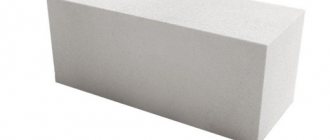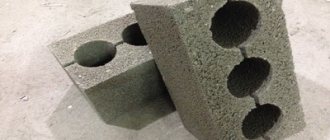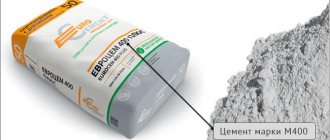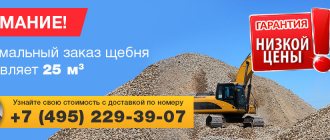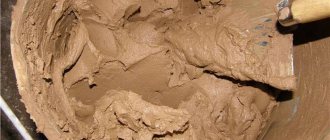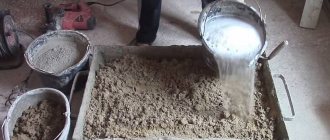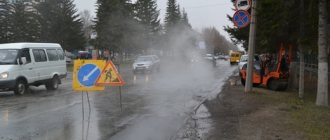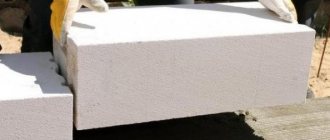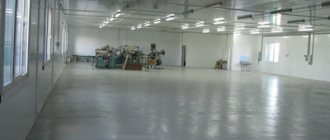Currently, foam blocks are in great demand in the construction market. The material has many positive characteristics, but has one drawback - weak strength. Therefore, foam block walls require mandatory reinforcement. A common material for reinforcement is reinforcement or a special mesh. They are placed in mortar between the rows of masonry. With the development of new technologies, polymer fibers began to be used for the manufacture of foam blocks. The result was a reinforced block of increased strength - a fiber foam block. Today we will take a closer look at this material, and also get acquainted with various methods of reinforcing foam block walls.
How did fiber foam concrete appear?
The structure of the word itself shows that at first there was foam concrete: a foamed mixture of cement, sand and water. The foamy structure of the raw mixture was given by natural or synthetic foaming agents. Having cut the resulting mass into blocks, without the use of high-tech equipment, the molded mixture was allowed to harden directly in the open air. To increase the strength of the block, an autoclave was used, but such hardening was enough, at most, to build a two-story house.
The idea of increasing the strength of the foam block to plastic deformation, stretching and bending formed the basis for the creation of a new generation of foam blocks -
reinforced with polypropylene fiber .
Reinforced blocks - what are they?
The main additives of reinforced blocks are glass fiber, basalt or metal fiber, polymer fiber, and roving. When making a fiber foam block, 1% fiber of the total volume of the solution is added to the cement-sand mixture. When mixed, the fiber is evenly distributed throughout the solution, which significantly increases the strength of the foam block. The most common blocks are those with the following additives:
- fiber foam block with polypropylene fiber is resistant to abrasion. The block has high resistance to thermal and mechanical stress;
- fiber foam block with basalt fiber is resistant to vibration and shock.
Fiber foam blocks are used for the construction of load-bearing walls, installation of buildings on unstable soils and lightweight foundations, for the construction of internal partitions, and insulation of houses.
For the rapid construction of buildings, fiber foam blocks with applied decorative cladding are used. The variety of block textures includes about 50 types. The cladding imitates marble, stone, brick. For ease of laying, each block has a tongue-and-groove lock. Upon completion of the masonry, the fiber foam block is painted with acrylic or silicone paint. The wall cladding takes on the color of natural material.
Reinforcement of foam blocks
To give the porous structure of the material greater internal conjugation, due to the uniform introduction of dispersed reinforcement into the mixture (0.5-2%), different types of fibers or granules are used :
- synthetic;
- steel;
- glass;
- basalt;
- composite;
- vegetable.
At the same time, the desired properties of the block can be specified by using reinforcing fibers coated with surfactants (the optimal fiber diameter is 18 microns) in the form of various combinations, combinations, and new proportions. The fibers are evenly distributed throughout the entire volume of the mixture in all directions, creating internal cohesion of the concrete, preventing hidden defects in the future.
The quality of the fiber can be easily determined by the edges of the block: it should not stick out, but be softly and elastically incorporated into the concrete structure. To ensure the quality of the product, you should ask the seller for a fiber certificate: glass fiber is cheaper, tougher and more vulnerable to alkali. The best option is polypropylene.
The creation of a new generation of material - nanofibre foam concrete - is based on the use of extended cylindrical structures with a molecular structure and D from 1 to several nanometers, the so-called “nanotubes”, as reinforcing fibers.
Do-it-yourself garage made of foam blocks. You will read about this in our next article. And this article is about glue for foam blocks.
Technological process and its features.
4.1. Manufacturing technology
During the production of reinforced foam blocks, a small amount of fiber is added to the mixture of sand, cement and organic foaming agents, amounting to no more than 1% of the total volume of the solution.
Thorough mixing allows the fiber fiber to be evenly distributed throughout the entire volume of the solution, turning an ordinary foam block into a reliable and durable composite material. This simple process allows you to optimize the structure of foam concrete, which completely eliminates the formation of defects and ensures high quality of the finished blocks.
4.2. Reinforcement with polypropylene fiber.
Polypropylene fiber fiber is successfully used to reinforce concrete of all possible types. It not only seriously increases the resistance to various mechanical and thermal influences, but is also highly resistant to abrasion of foam blocks, making it possible to increase this indicator several times.
4.3. Reinforcement of foam blocks with basalt fiber
Foam blocks reinforced with basalt fiber are distinguished, first of all, by their resistance to various types of vibration, fire safety and a high degree of resistance to shock loads, which ultimately affects the service life of buildings and reduces financial and labor costs for construction.
The use of reinforced foam blocks opens up completely new possibilities in modern construction and significantly reduces the cost of the construction process itself.
What does reinforcement of foam blocks provide?
- Flexural tensile strength is 25% higher.
- Impact resistance is 9 times higher.
- Increase in density as the ratio of mass to volume - up to 1,200.
- Thermal insulation qualities are 30% higher.
- Blocked capillaries reduce water permeability.
- Fire resistance increases, allowing destruction of an object made of reinforced blocks only after 14 hours.
- Frost resistance increases by 1.5 times (up to 100 cycles).
- Sound insulation performance increases.
- Increased strength to local loads expands the scope of application of fiber foam blocks, including multi-story construction.
- The increased strength of the blocks makes it possible to reduce their dimensions and, thereby, reduce the cost of transportation (there are 28 blocks or 56 half-blocks in 1 cubic meter).
Similarities with foam block
- Both types of building blocks have the same production technology, which is regulated by the same GOST 21529-89.
- They do not require major investments in the production process.
- They are made by molding and cutting the raw mass (for fiber foam block, cutting is less effective, since fiber fiber loses 20% of its strength when cut).
- Both types are characterized by lightness and durability.
- They are fire resistant.
- They retain heat well in the room.
- They are malleable when machined with a milling cutter, hammer drill, or strober.
- For masonry work on both types of material, special glue is used.
- They have general application according to the density indicator :
- for thermal insulation of internal walls;
- to create load-bearing structures;
- for structural and thermal insulation work.
- They have masonry units that are identical in appearance and purpose
- wall blocks;
- partition (semi-blocks).
Construction of partitions from foam blocks. Read about this in our next article. And this article tells you how to lay foam blocks correctly.
Where is it preferable to use fiber foam block?
- Construction of industrial buildings, garages and domestic buildings;
- construction of low-rise buildings using a frameless method;
- construction of attics, dachas, cottages;
- during reconstruction of buildings;
- for the installation of inter-apartment and interior partitions;
- for lintels over window and door openings;
- for the installation of formwork for a monolithic belt;
- for transverse ligation of masonry;
- construction of buildings of any number of storeys on a reinforced concrete frame.
Strengthening foam block walls
The weak strength characteristics of the material require reinforcement of walls from foam blocks when performing any masonry. Properly selected reinforcement material will save the foam block wall from fractures, making it much stronger. The most vulnerable are the interior walls of the building, since their masonry is made of thin blocks. There are many methods for strengthening foam block walls. We will look at the most common ones that are currently used.
Strengthening walls with reinforcement
Reinforcing foam block masonry with reinforcement is mainly used for external walls of a building. Rods with a diameter of 10-12 mm are laid on every 4th row. The rows with door and window lintels are also reinforced separately. Reinforcement is performed in the following order:
- When the laying of a whole row is completed, grooves are made in the blocks using a special tool - a wall chaser. The tool can be used manually or powered by electricity.
- For the grooves, markings are made along the upper plane of the masonry. Markings are applied on both sides of the blocks at a distance of 70 mm from the edge so that two parallel lines are obtained. Using a wall chaser, cut grooves according to the markings and clean them from dust with a brush.
- A solution is applied to the grooves. The reinforcement is laid on top, pressing it inside the groove flush with the upper plane of the foam block. The next rows are laid using an adhesive mixture on top of the reinforced row.
Reinforcing thin walls with stripes
The masonry of thin walls indoors and partitions is reinforced with a strip of galvanized metal with a cross-section of 8x1.5 mm. There is no need to cut a groove for laying the strip. It is placed between foam blocks on the adhesive mixture. To increase strength, a frame is made from 2 strips, weaving them together with wire.
Strengthening window and door lintels
Foam block masonry over window and door lintels is more vulnerable to cracking. You can strengthen the jumpers with U-shaped blocks. Their width is selected in accordance with the thickness of the masonry. The block shape has 2 side walls, one of which is thicker. With this wall, the block is placed on the outside of the wall.
U-shaped foam blocks replace concrete formwork. Having installed them, it is hardly possible to cast a jumper of the required length. The main thing is that the depth of its stop is at least 200 mm. U-shaped foam blocks are laid using the following method:
- A temporary support made of wooden beams or metal profile is installed under the blocks in the opening.
- On top of the support, a masonry of blocks is built in one row with the notch facing up. All seams are connected with an adhesive mixture.
- A frame made of reinforcement is placed in the resulting tray. The diameter of the rods is selected individually for the calculated load.
- The tray with the frame is poured with concrete, leveling the surface of the foam block flush.
Strengthening blocks near openings
Strengthening foam blocks located at the edges of door and window openings is done with reinforcement with a diameter of about 5 mm. The grooves for the rods are made with a margin so that after filling them with mortar, the thickness of the reinforcement does not exceed 12 mm. This is necessary for subsequent insulation of the openings.
It is easier to strengthen the outer blocks of openings with special corner reinforcement. In addition to strengthening the masonry, corner reinforcement helps to create even corners.
Reinforcement of masonry with mesh
Foam block masonry reinforced with reinforcing mesh is current. Its design consists of rods with a diameter of 5-6 mm, welded or interconnected into cells. The mesh is used if the blocks are laid not on an adhesive mixture, but on a cement mortar. Every 3rd row of masonry is reinforced with mesh if the wall thickness reaches 200 mm. Walls more than 300 mm thick are reinforced with mesh every 4 rows of masonry. The wall-reinforcing mesh is placed in grooves cut with a grinder on the blocks. A mesh with larger cells requires less groove cutting, but its use is not always advisable.
Rolled mesh is also used for reinforcement. It is laid from the 1st row. Then every 3-4 rows of masonry, and in the top 2 rows.
If it is impossible to reinforce the wall with a mesh, polypropylene fiberglass is placed in the solution. The material enhances the characteristics of the foam block, increases heat and sound insulation.
Construction of a reinforcing belt
Many builders, when erecting foam block walls, limit themselves only to reinforcement. The construction of a reinforcing belt is abandoned due to savings. It is not right. After all, it is the design of the belt that distributes the load from the reinforced concrete floor slabs.
To make an armored belt, formwork with a height of 150 mm is built around the perimeter of the wall. Inside, a frame with a width slightly less than the thickness of the wall is knitted from reinforcement with a diameter of 8-10 mm. Four rods are distributed in the corners, and one in the center. The formwork is filled with M-200 concrete and left to harden. In multi-storey buildings, an armored belt is erected at each level, and the last one is under the roof. At the same time, anchors are laid in the last belt to secure the rafters.
During the construction of buildings, the reinforcement of foam blocks is the key to the longevity and strength of the walls.
In contact with
The advantages of fiber foam concrete acquired during the reinforcement process
- The fiber frame distributes the load throughout the entire volume of the wall blocks.
- Due to the ideal geometry of the blocks, smooth walls can be erected.
- It is resistant to high humidity. Does not get wet even when in contact with water.
- Allows installation of communications (pipes, electrical networks), both open and hidden.
- Holds heavy objects (pictures, cabinets, shelves) well to the wall.
- Fiber foam block is applicable for the construction of three-story houses without a reinforcement belt.
- Allows you to reduce the thickness of walls (compared to brick) by 3 times.
- Reduces costs for building materials by 4 times.
>
The main advantages of reinforced foam blocks
The use of fiber reinforcement materials ensures more uniform hydration of cement, resulting in a significant increase in the tensile, bending and compressive strength characteristics of the material.
The emergence of new spatial connections due to the use of a reinforcing component; reinforced foam blocks have a high level of protection against deformation, good resistance to corrosion, and the possibility of cracks tends to zero. A metal mesh cannot provide such a positive effect due to its small surface area, which invariably leads to the appearance of all kinds of cracks that make it impossible to maintain the integrity of the entire structure.
In addition, it should be noted a number of advantages that fiber foam blocks have, among which the main ones are the following:
1. Cost-effective.
Construction using reinforced foam blocks is much cheaper compared to other possible materials, which is due to their low cost and ease of installation due to the relative lightness of foam blocks.
2. Excellent sound and heat insulation.
Foam blocks, which are reinforced with fiber fiber, due to their cellular structure, are distinguished by their excellent ability to absorb sound and are themselves an excellent insulation material that can maintain the ideal temperature of the room, regardless of external conditions, which allows you to save considerable money on heating.
3.Reliability.
This material is completely unaffected by time, and thanks to the fairly light weight of the structures and fiber reinforcement, the seismic resistance of buildings is significantly increased, which is important for those areas where there is a risk of earthquakes.
4. Environmental friendliness
The environmental friendliness of the material is due to the fact that reinforced foam blocks do not emit any toxic substances during operation.
Fire safety
Fire safety, which is due to a high degree of fire resistance.
Frost resistance
Frost resistance, which for reinforced foam blocks is at least a third better than that of conventional foam blocks.
Cost of reinforced foam block
Although fiber foam blocks are used mainly for budget construction, their cost is slightly higher due to the use of a reinforcing component. Market price fluctuations include orientation to the brand of fiber foam concrete product, batch size, authority of the supplier and the manufacturer.
Using the table below you can get an idea of the approximate price for the most popular brands of fiber foam blocks (excluding VAT):
What to build a house from? From timber or foam blocks? We have discussed this issue here. And here is an article about the pros and cons of foam blocks.
This section contains many informative articles about the foundation for your home.
